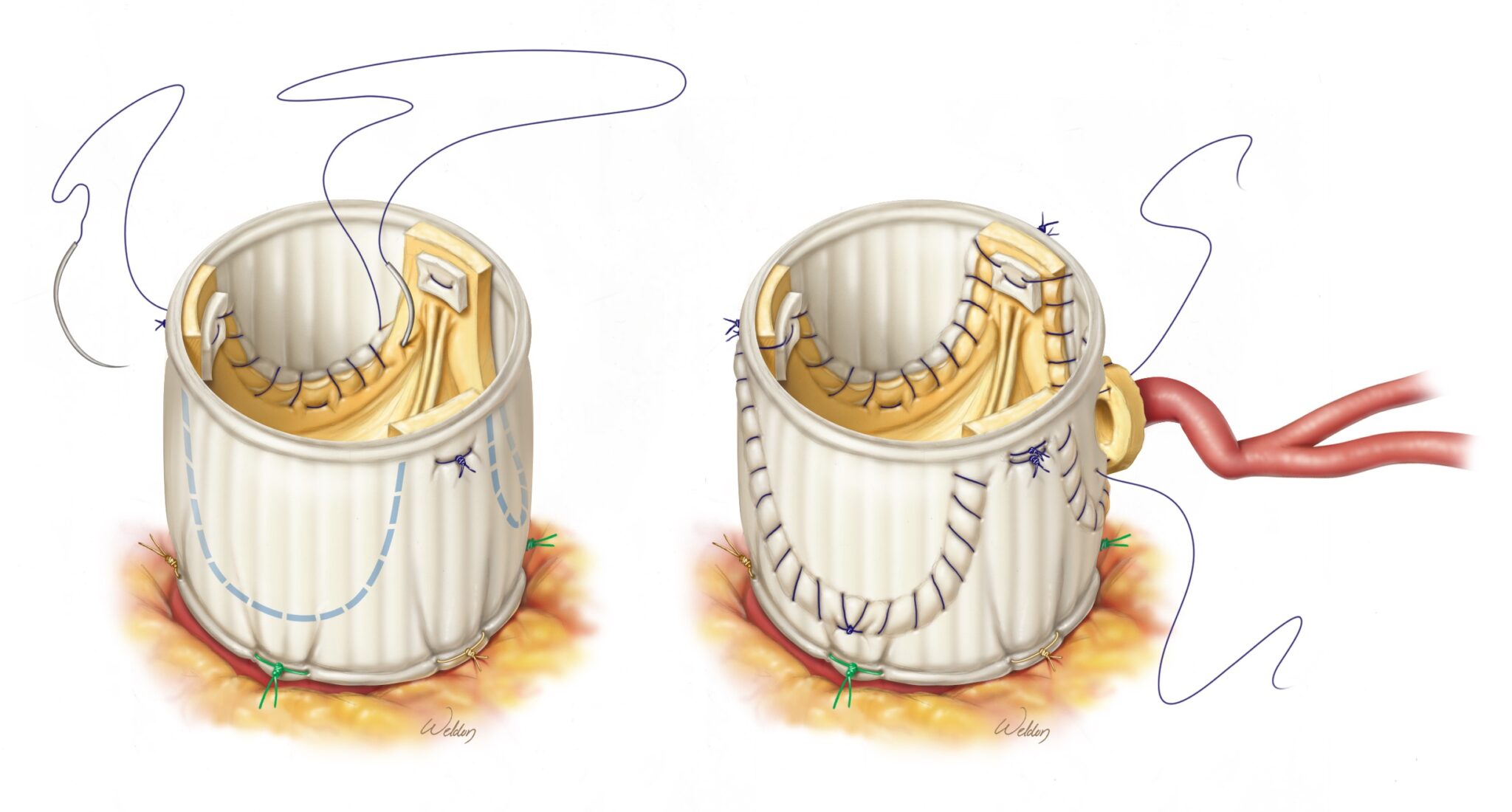Technique for Replacing Aortic Root While Leaving Valve in Place Detailed in New Article

A recent article published by surgeons at The Texas Heart Institute and Baylor College Medicine details a complex procedure for replacing the aortic root while leaving the native aortic valve intact.
In patients whose aortic root—the portion of the aorta attached to the left ventricle, where the heart’s aortic valve resides—requires surgical replacement because of an aneurysm, it is ideal to replace the root but to leave the valve intact. This avoids the drawbacks of replacing the native valve with a bioprosthetic valve (which has limited durability) or a mechanical valve (which requires the patient to take blood thinners for life).
The first valve-sparing aortic root replacement (VSARR) operations were reported in 1992. Since then, surgeons have been refining the technique, and VSARR has become the procedure of choice for patients whose aortic valve anatomy is amenable.
In a newly published article in Operative Techniques in Thoracic and Cardiovascular Surgery, aortic surgeons Drs. Ourania Preventza, Alice Le Huu, and Joseph Coselli describe their version of the VSARR technique, using a series of descriptions, hand-drawn illustrations, and intraoperative photographs to elaborate the procedure step by step.
“An aortic root aneurysm deforms the root,” says Dr. Preventza, “which disrupts the natural functional relationship between the root and the aortic valve. This procedure restores that relationship by excising the diseased portion of the aorta and then replacing it by ‘parachuting’ a graft made of Dacron down around the aortic valve. We suture the valve to the inside of the graft, then suture the end of the healthy portion of the ascending aorta to the new root.”
“Because of the native valve’s advantages over prosthetic valves,” Dr. Preventza adds, “this procedure gives patients a better quality of life.”
Read Report
Preventza O, Le Huu A, Coselli JS. Straightforward contemporary step-by-step approach to aortic root replacement with valve-sparing tricuspid aortic valve repair. Op Tech Thorac Cardiovasc Surg. 2022, in press. doi.org/10.1053/j.optechstcvs.2022.12.001
Figure. After a Dacron graft is “parachuted” down over the patient’s native aortic valve, the valve is sutured to the inside of the graft. Image created by Scott A. Weldon, MA, CMI, FAMI, and used with permission from Baylor College of Medicine.
News Story By Stephen N. Palmer, PhD, ELS




